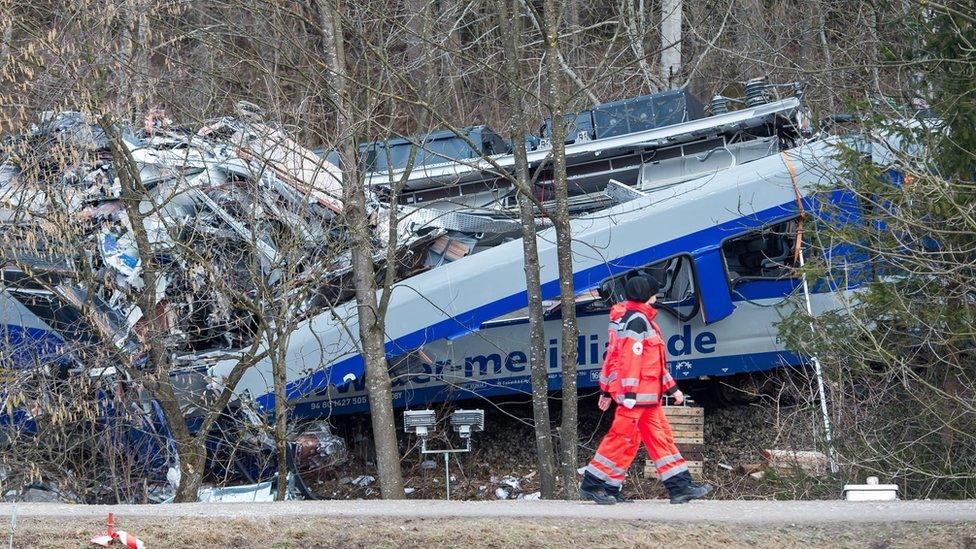Germany train crash: Evidence of human error
- Published

The trains crashed head-on while travelling on a single-track stretch
Investigators have blamed a signal controller for the crash of two German commuter trains that killed 11 people and injured more than 80 on 9 February, south-east of Munich.
Their conclusion came after hearing from 71 crash survivors, including 19 seriously injured.
The head-on collision happened near Bad Aibling, a spa town near the Austrian border, about 60km (37 miles) from the Bavarian capital.

How did the crash happen?
A week after the crash, prosecutors said it appeared to be human error but "not with intent".
An area controller mistakenly opened the track to the two trains.
Investigators say the controller also gave a signal to one of the trains that "should not have been given". It disabled the automatic safety systems.
Realising his mistake, he then issued two emergency signals, the investigators said, but "they were not picked up" as it was too late.
The trains collided at about 100km/h (60mph), at 06:48 local time (05:48 GMT) during the rush hour.
One derailed, ripped apart by the impact, and many carriages were tipped over.

Both drivers were among the 11 who died in the crash.
There were about 150 people on board - fewer than normal, because schools were closed for carnival holidays and many people had the day off work.
Both the drivers were employed by the same company, Meridian, a private firm with the contract for short-distance train services in the area.

What will happen to the controller?
The controller, a 39-year-old with several years' experience in the job, is likely to be charged with involuntary manslaughter and could face five years in jail.
He has been moved to a "safe location" and is "not feeling well", the prosecutors said.
But he is not in preventive detention, because he is not suspected of malicious intent.
He underwent a blood test on the day of the crash and did not test positive for alcohol or drugs.


Why did the safety systems fail?
Investigators say they still need to determine who might have been able to prevent the crash, and at what time.
The track was fitted with an automatic braking system. The system is meant to alert the driver when a train is approaching a red light. If the driver does not respond quickly enough, or if the train goes through the red light, the brakes are activated.
Officials say the system had passed safety checks and the investigation did not find evidence of any technical malfunction, pointing to the actions of the controller.
Trains are equipped with layers and layers of safety features. But even the very last available precaution seems to have failed in this case.
Officials say they assume both train drivers also had no visual contact before the crash, as the site is on a bend, so they did not apply the brakes manually.
Analysts say there now appears to be a case for making restrictions on manual overrides to the automatic safety systems tighter.

Injured people were rescued by helicopter and by boat
- Published16 February 2016
